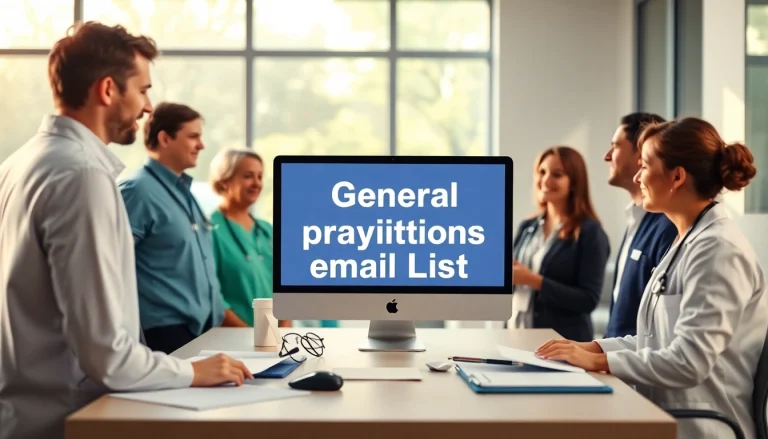
Understanding the Basics of Document Verification
What is Document Verification?
Document verification is the process of assessing and validating documents to ensure their authenticity and integrity. This procedure is crucial in various sectors, such as finance, education, and employment, where the validity of a person’s credentials or identity can significantly impact decision-making processes. Document verification involves scrutinizing documents such as passports, driver’s licenses, academic transcripts, and business licenses to confirm that they are genuine and unaltered.
The Importance of Document Verification in Business
In today’s fast-paced business environment, ensuring trust and security is paramount. The ramifications of failing to implement effective document verification can be catastrophic, ranging from financial loss to reputational damage. Companies utilize document verification to prevent fraud, comply with regulations, and build a reliable customer base. Furthermore, it promotes fairness in recruitment processes and helps stave off any legal issues that may arise from inadvertently accepting fraudulent documents.
Common Types of Document Verification
Document verification can take several forms, each tailored to meet specific needs:
- Identity Verification: This includes validating government-issued IDs, such as passports or national identification cards.
- Academic Verification: Often employed by educational institutions and employers to confirm the authenticity of degrees and transcripts.
- Employment Verification: Involves checking past employment records to ensure that candidates have the experience they claim.
- Financial Document Verification: Used to validate bank statements, tax documents, or any financial records that may influence lending decisions.
Challenges Faced in Document Verification
Identifying Potential Fraud Risks
Fraud detection in document verification is a significant challenge. With increasing sophistication in forgery techniques, businesses often struggle to keep up with illicit means that individuals may employ to present fake documents. Some common fraud risks include:
- Altered Documents: Modifications made to legitimate documents to misrepresent information.
- Counterfeit Documents: Completely forged documents that resemble the original but carry false information.
- Stolen Credentials: Using another person’s documents or credentials without their consent.
Technological Barriers in Verification Processes
The rapid evolution of technology continues to transform the landscape of document verification. However, technological barriers can hinder effective verification processes. Some of these barriers include:
- Lack of Standardization: Different industries may use various document formats and verification methods, complicating the verification process.
- Integration Challenges: Existing systems may not adequately integrate with new verification tools, resulting in friction in the verification workflow.
- Data Privacy Concerns: Many organizations are fearful of how they store and process sensitive information during verification.
Legal and Compliance Issues Related to Verification
Organizations are bound to comply with various legal standards and regulations concerning document verification, such as the General Data Protection Regulation (GDPR) and Anti-Money Laundering (AML) laws. Non-compliance can result in severe penalties and reputational damage.
Businesses must ensure that their document verification processes adhere to legal standards, including:
- Informed Consent: Obtaining explicit consent from individuals prior to verifying their documents.
- Data Protection: Implementing measures to protect sensitive information acquired during the verification process.
- Regular Audits: Conducting audits to ensure compliance with current laws and regulations.
Best Practices for Effective Document Verification
Implementing Robust Verification Procedures
Establishing solid verification procedures is crucial for minimizing fraud risks. Effective procedures should encompass the following steps:
- Define Verification Criteria: Establish clear criteria that documents must meet during the verification process.
- Utilize Multiple Sources: Whenever possible, verify documents against multiple sources to establish authenticity.
- Implement A Review Process: Have a systematic review process for flagged documents to facilitate thorough analysis before making decisions.
Leveraging Technology for Enhanced Security
Technology can significantly enhance the effectiveness of document verification. Key technologies include:
- OCR Technology: Optical Character Recognition can help extract and validate information from scanned documents.
- Blockchain: Utilizing blockchain for storing verification records ensures immutability and trust.
- AI and Machine Learning: These technologies can facilitate the real-time identification of fraudulent patterns and anomalies in documents.
Training Employees on Verification Techniques
A well-informed workforce is essential for effective document verification. Providing training sessions that cover:
- Identifying Red Flags: Educate employees on common signs of fraudulent documents.
- Using Technology: Teach staff how to effectively utilize verification technologies available to them.
- Legal Compliance: Ensure that employees understand and are aware of the legal implications of document verification.
Case Studies Demonstrating Effective Document Verification
Success Stories from Leading Organizations
Multiple organizations have effectively implemented document verification frameworks resulting in enhanced security and reduced fraud risks. For example:
XYZ Financial Services: After implementing a robust verification process, XYZ Financial Services reported a 30% decrease in fraudulent applications. Their implementation of advanced verification technologies allowed them to streamline processes and identify potential fraud in real time.
Analysis of Verification Failures and Lessons Learned
While effective verification strategies can enhance security, failures are telling lessons of what to avoid. A well-publicized case involved an employment agency that failed to check candidates’ academic credentials.
The agency hired several candidates with forged degrees, which not only affected operational integrity but also resulted in significant financial loss and reputational damage. The key takeaway from this failure was:
- Always conduct comprehensive background checks to verify the authenticity of educational and professional credentials.
Industry-Specific Approaches to Verification
Different industries require tailored verification approaches that comply with specific regulations and risks. For example:
- Banking: Utilizes advanced software for identity verification to comply with regulatory requirements.
- Healthcare: Requires strict verification of professional credentials to ensure patient safety and quality of care.
- Education: Often relies on centralized databases to verify academic credentials for admissions or employment.
Measuring the Success of Document Verification Efforts
Key Performance Indicators for Document Verification
To evaluate the effectiveness of document verification processes, organizations can employ key performance indicators (KPIs) such as:
- Fraud Rates: The percentage of fraudulent documents detected during the verification process.
- Processing Time: The average time taken to verify documents, impacting client experiences.
- Employee Training Metrics: Tracking attendance and performance in training sessions related to document verification.
Continuous Improvement through Feedback and Audits
Regular audits and feedback loops are essential for the continuous improvement of verification processes. Organizations should implement:
- Audit Trails: Maintain accurate records of document verification processes that can be reviewed.
- Feedback Mechanisms: Create channels through which employees can provide insights on potential challenges in the verification process.
- Periodic Reviews: Carry out scheduled reviews of verification processes to identify areas for enhancement.
Adapting to New Challenges in the Verification Landscape
The landscape of document verification is continuously evolving, and organizations must be prepared to adapt. Keeping pace with changes in technology, regulatory environments, and fraud tactics is essential. Organizations should:
- Stay Informed: Regularly follow industry news and trends relevant to document verification.
- Invest in Training: Continuously invest in employee training to ensure skills remain updated.
- Enhance Technology: Periodically review and upgrade verification technologies to counter emerging threats.






